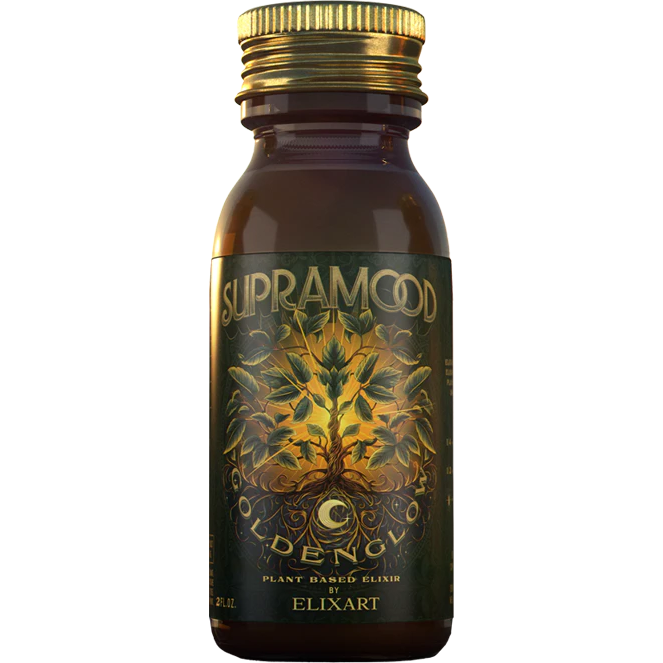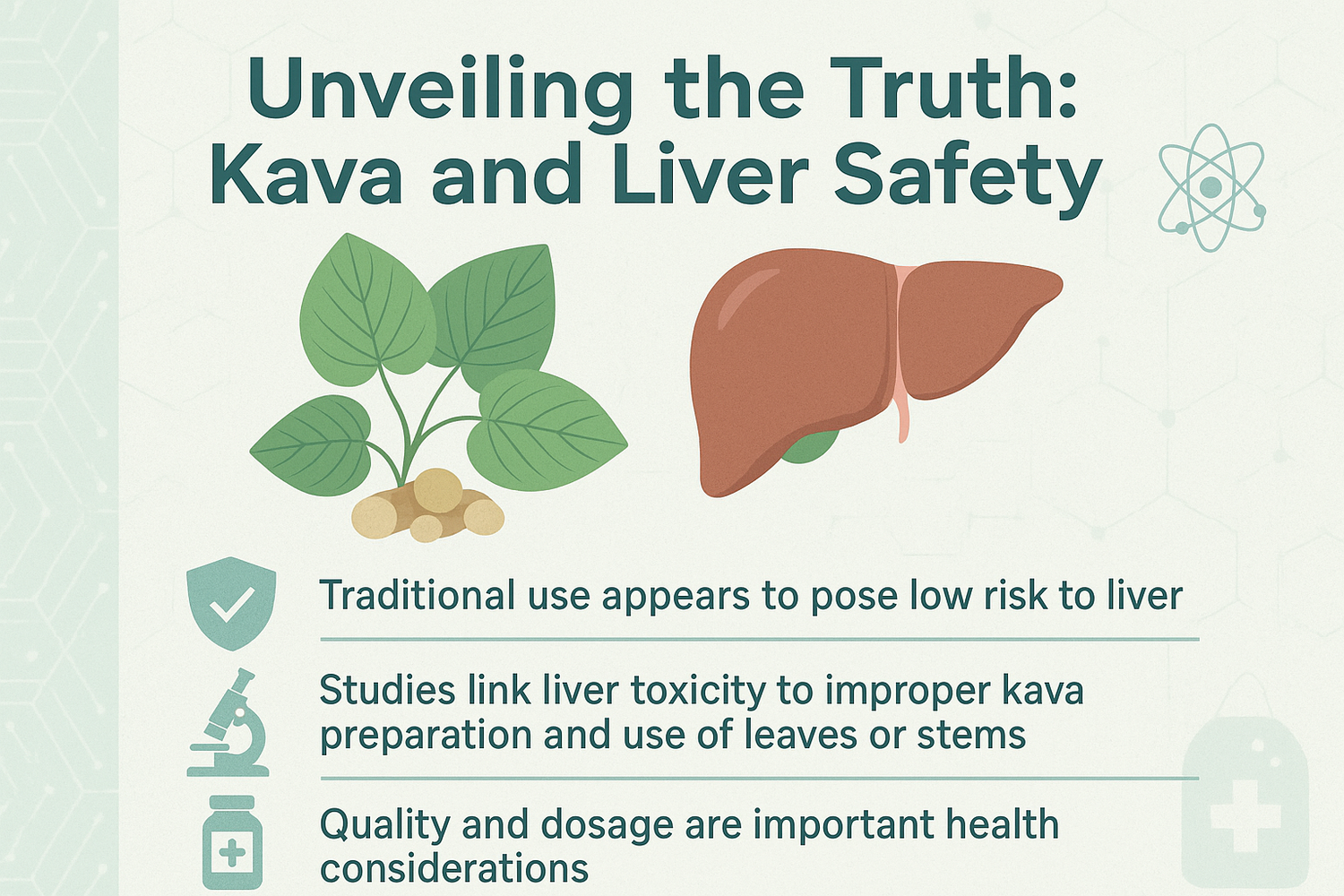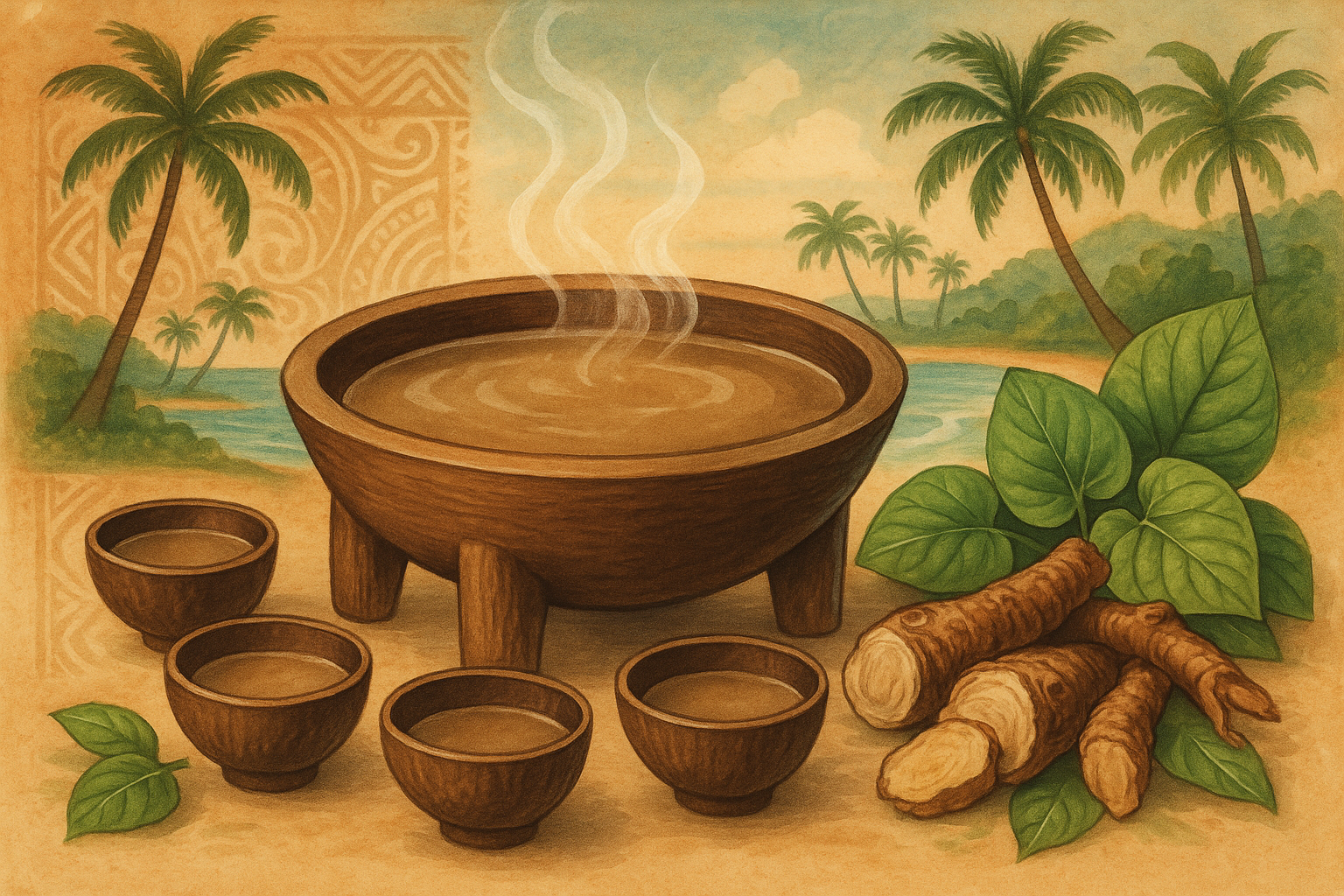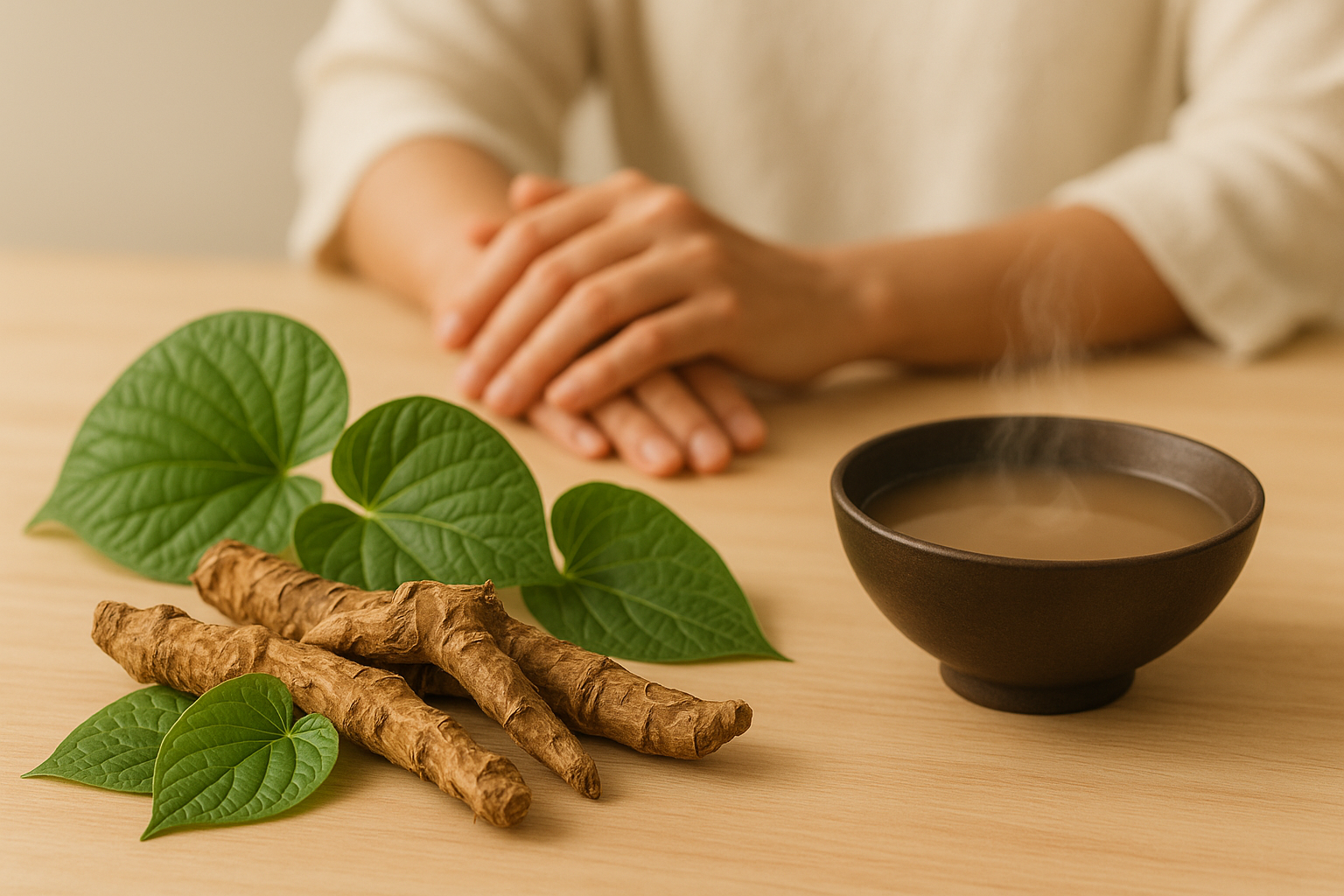Imagine sitting on a peaceful beach in the South Pacific, sipping a traditional kava drink with friends, the sunsetting on the horizon. For centuries, kava has been a cornerstone of relaxation and communal bonding in Pacific Islander cultures. However, in recent years, a myth about kava's potential to cause liver damage emerged, putting a damper on its reputation. But what if I told you that the science firmly debunks this myth? Let's dive into the findings of a recent World Health Organization study that illuminates the truth about kava and liver health.
The Origins of the Kava Liver Damage Myth
The story of kava is as rich as its history. For centuries, kava has been a cherished beverage in the Pacific Islands. Used in various cultural, social, and spiritual settings, it has provided relaxation and connection among communities. However, in the 1990s, troubling reports began to surface. Would these reports overshadow kava's long tradition of safety and enjoyment?
The Emergence of Concerns
In the 1990s, around 40 liver issues linked to kava consumption were documented in Europe. These reports were serious. They led to heightened scrutiny and even global bans on kava products. The German Federal Institute played a significant role in this situation. They recorded various cases that included liver transplants and fatalities. This made many people question kava's safety.
Differences in Consumption Techniques
Not all kava is consumed in the same way. For many Pacific Islanders, traditional methods involve preparing kava using whole root and water, often leading to unique flavors and effects. Conversely, Western methods may use processed forms, such as instant kava. Is it fair to compare these different techniques? After all, the way kava is prepared can influence its effects and any potential risks.
'The link between kava and liver damage was often overstated and misinterpreted.'
This sentiment encapsulates the confusion surrounding kava. The media played a significant role here. It highlighted negative stories and downplayed or ignored the longstanding safe use of kava among Pacific cultures. The narrative shifted, and the natural remedy seemed to be unreasonably painted as dangerous.
A Closer Look at the Data
Understanding the full history of kava requires examining the documented evidence. Here’s a table showcasing the critical data from the 1990s and 2002:
Year
Event
|
1990s |
40 liver issues documented in Europe |
|
2002 |
Ban on kava products in Germany |
Despite these negative findings, kava continues to garner attention. In recent years, studies have indicated that kava, particularly water-extracted forms, could pose little risk to the liver when used correctly. Perhaps it's time to revisit our understanding of this age-old remedy.
If you’re curious about kava, exploring safe options like Kava products from Supramood may be worth considering for relaxation. Understanding kava's history and current research can help you make informed choices that honor both tradition and safety.
The Crucial WHO Study Findings
Understanding the Study Assessment Methods
The World Health Organization (WHO) published a notable study in 2007. It aimed to thoroughly assess the risks of hepatotoxicity linked to kava products. So, what makes this study stand out? First, it employed rigorous scientific methods.
Researchers critically analyzed existing data, which included clinical trials and other experimental studies. This approach was different—more organized—compared to prior studies, which often lacked comprehensive methodology. It’s like comparing a well-prepared meal to fast food; one offers a thoughtful approach while the other may just hit the surface.
Key Findings About Kava and Hepatotoxicity
The findings were striking. The study concluded that,
‘Most experimental studies haven’t shown that kava causes harm to liver cells.'
This statement directly challenges earlier claims linking kava to severe liver damage.
- Causality incidence rate: Less than 0.02 per million doses raised very few concerns.
- This was significantly lower than the risks associated with certain anxiety treatments.
Contradiction of Previous Studies
Before this research, many studies warned about the potential liver dangers of kava. However, this WHO study contradicted those claims. It carefully dissected assumptions made in earlier research. The implications are huge for kava consumers everywhere. They can now approach kava products with more confidence.
A Transparent Analysis of Causality
This study didn't just draw conclusions; it also provided a transparent analysis of causality. It scrutinized the reasons behind the fears linked to kava. By doing this, it exposed a significant gap between the anxiety and reality of kava's effects.
Still, some experts argue that the discussion around kava should continue. Why? While this information shines a light on kava’s safety, ongoing research is essential for fully understanding its benefits and risks.
If you're interested in exploring the world of kava further, consider checking out the GoldenGlow Elixir. It offers a great introduction to the calming benefits of kava. Enjoy the relaxation without the worry!
Exploring Kava: Benefits Beyond Relaxation
The Therapeutic Uses of Kava Through History
Kava has a rich history of use, especially in the Pacific Islands. For hundreds of years, it has served both social and ceremonial purposes. Think about it: in many traditions, kava isn’t just a drink; it’s a connector of people. It brings communities together during important events. Its use in healing ceremonies underscores its role in mental wellness and not just relaxation.
Contemporary Applications in Mental Wellness
Today, kava is gaining traction as a natural approach to mental health. Researchers suggest that it can *reduce anxiety* and promote relaxation without the heavy side effects seen in synthetic medications. Consider this: kava might be beneficial for those looking for alternatives to traditional anti-anxiety drugs.
- Potential to alleviate stress
- Offers a more holistic approach to wellness
- Can integrate into daily routines for better mental health
Comparison to Synthetic Anxiety Medications
When you think about anxiety medications, a few names come to mind, right? Many are powerful, but they also carry risks. Kava presents a natural alternative. Imagine having something that reduces your anxiety with lower side effects. In fact, some studies suggest that kava could offer a more favorable benefit-risk profile compared to synthetic options. For many, it’s a game changer.
Kava in Cultural Contexts
Let’s not forget the cultural significance of kava. Its consumption is often embedded in rituals and gatherings. This cultural backdrop can enhance the drinking experience itself. You’re not just sipping on a beverage; you’re partaking in a tradition that has lasted generations. Such experiences link you to the community of kava drinkers worldwide.
“These new findings may ignite a renaissance for kava as a viable tool for wellness.”
As our understanding of kava expands, so does the recognition of its benefits. Experts are now appreciating its role in medicine, promoting mental wellness while presenting minimal risks. If you’re curious about trying kava, check out our product link. With options available from traditional kava roots to modern formulations, there's something to fit every lifestyle.
The Role of Kava in Social and Healing Ceremonies
Firstly, consider how kava is used in social settings. It’s often the centerpiece of gatherings, fostering conversations and camaraderie. In healing ceremonies, kava is believed to harness the power of calming and soothing effects, making it a staple in various cultures.
Comparative Analysis of Drug Efficacy and Risks
Factor
Kava
Synthetic Medications
|
Efficacy |
Low anxiety, promotion of calmness |
Varied effectiveness; may cause sedation |
|
Side Effects |
Minimal risk of complications |
Potentially severe side effects |
|
Usage Restrictions |
Generally acceptable |
Strict prescription guidelines |
As you delve further into kava, its historical applications and contemporary relevancy in mental wellness illustrate its potential. Are you ready to join the kava movement?
Navigating Kava Consumption Safely
Important Considerations for New Consumers
Are you thinking about trying kava for the first time? That's great! However, there are some things you should know. First, kava is not just a drink; it's a cultural experience deeply rooted in the South Pacific traditions. Your first sip should come with an understanding of where it comes from and how it's made. What’s more, always source from reputable brands to ensure quality and safety. People often ask, “Is kava safe?” The answer is yes, but with respect and knowledge, as noted in the quote:
“It's essential to approach kava with respect and knowledge.”
Recommended Dosages and Forms
When starting your kava journey, dosages can be confusing. A standard serving size usually ranges from 1 to 4 grams of kava root. It's often consumed in various forms—micronized, instant, or traditional preparations. Each form has its own effects. If you’re looking for something on-the-go, Supramood's GoldenGlow Elixir is a convenient option to consider. It combines the benefits of kava with other adaptogenic ingredients.
Debunking Common Safety Myths
Kava has often been shrouded in safety myths. Many fear it might harm the liver. Fortunately, recent studies, including one from the WHO, have debunked this myth. The research emphasized that claims of liver damage were exaggerated. If used responsibly, kava is quite safe. Understanding these points can help silence doubts and clarify its role in relaxation.
How to Pair Kava with Lifestyle for Wellness
Now that you know the basics, how can you pair kava with your wellness routine? Thoughtful consumption is key. Consider integrating it into your evening wind-down rituals. Enjoying kava while meditating or engaging in a creative hobby can enhance the calming effects. It’s not just about drinking; it's about creating an experience that complements your lifestyle.
Cultural Insights and Practical Advice
To enjoy kava fully, understand its cultural significance. For centuries, it has been a part of social and ceremonial gatherings in the Pacific Islands. As you sip your kava, think of the connections it has built across generations. This cultural knowledge only deepens your appreciation and experience of this calming beverage. Remember, taking these practical steps can elevate your kava journey into something meaningful.
The Future of Kava: Embracing What We Know
Looking Forward: Kava's Place in Wellness Culture
Kava is rising in popularity. But why? Many people view it as a natural remedy for anxiety and stress. You might be curious about what that means for your wellness. As society shifts towards holistic health, the demand for plant-based solutions like kava is on the rise. Imagine a culture where relaxation isn't just a luxury, but a standard practice. That's what kava represents.
Call to Action: Embrace Kava with Informed Choices
In this new era of wellness, it’s crucial that you make informed choices about what you consume. Kava isn't just any botanical; it's rich in tradition and benefits, making it a unique addition to your routine. As you explore kava options, consider quality and sourcing. Look for brands that prioritize safety and transparency. For instance, you can check out Supramood's GoldenGlow Elixir, which focuses on purity and effectiveness.
Community Engagement: The Role of Education in Kava Safety
Education plays an essential role in ensuring safe consumption of kava. Misinformation can lead to stigma and skepticism, which creates barriers. Engaging in community discussions promotes awareness. Are you part of a group interested in herbal remedies? Sharing experiences and knowledge strengthens the community. When people understand the benefits and safety of kava, they’re more likely to embrace it.
Reflecting on Personal Experiences with Kava
Your personal experiences can shape your perspective on kava. Have you tried it before? Many users report feelings of calm and relaxation. Reflecting on how kava affects you can guide your future choices. These shared experiences also help others in the community feel supported. Remember: 'True wellness comes from understanding what you consume.'
Wrap-Up
The future of kava is bright, intertwined with the growing interest in natural remedies. As you navigate this journey, informed choices are key. Embrace community education and share what you've learned or experienced. The more we discuss kava's benefits, the more reduction in misconceptions will occur. Kava can effectively integrate into wellness practices, and by understanding its safety, we can help it achieve mainstream acceptance. Let's encourage those around us to appreciate kava, not just as a drink but as a culture that celebrates relaxation and wellness.
TL;DR: The WHO study dispels the myth that kava causes liver damage, emphasizing its safety and benefits for relaxation and mental well-being. Learn how kava can enhance your life without the worry.







Leave a comment
This site is protected by hCaptcha and the hCaptcha Privacy Policy and Terms of Service apply.